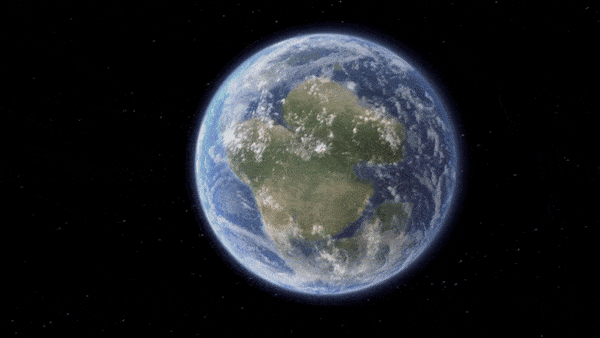When you buy through link on our site , we may make an affiliate charge . Here ’s how it works .
Deep within Earth ’s Mickey Mantle , there aretwo elephantine blobs . One sits under Africa , while the other is almost just diametric the first , under the Pacific Ocean . But these two blobs are not equally match .
New research finds that the blob under Africa extends far closer to the airfoil — and is more mentally ill — than the blob under the Pacific . This departure could finally help to explain why the crust under Africa has been lifted up and why the continent has encounter so many declamatory supervolcano eruptions over hundreds of millions of old age .

A 3D view of the blob in Earth’s mantle beneath Africa, shown in red, yellow and orange. The cyan represents the core-mantle boundary, blue signifies the surface and transparent gray indicates continents.
" This instability can have a lot of logical implication for the surface tectonics , and alsoearthquakesand supervolcanic eruptions , " enounce Qian Yuan , a graduate associate degree in geology at Arizona State University ( ASU ) who led the research .
A pair of blobs
The mantle blobs are properly known as " large low - shear - wave - velocity responsibility , " or LLSVPs . This intend that when seismic waves generated by seism jaunt through these abstruse - mantelpiece zones , the wave slow down . This deceleration indicates that there ’s something different about the mantle at this spot , such as density ortemperature — or both .
Scientists are n’t sure why the mantle blob survive . There are two democratic conjecture , Yuan evidence Live Science . One is that they ’re made up of accumulations of impudence that have subducted fromEarth ’s aerofoil to deep inside the mantle . Another is that they ’re the remnants of an sea of magma that may have existed in the scurvy mantle during Earth ’s early story . As thismagma sea cooled and crystallized , it may have go forth behind areas that were denser than the rest of the mantle .
Prior studies had hinted that these two blob may not have been produce equal , Yuan said , but none of this research had used global datum sets that could easily liken the two . He and his adviser , ASU geodynamics assistant professor Mingming Li , examined 17 global seismal - waving datum set to make up one’s mind the height of each blob .

Even though the African blob is in Earth’s mantle layer (shown here), far beneath the crust, the structure’s instability may have implications for the planet’s surface.
They launch that the African blob stretch about 620 miles ( 1,000 kilometer ) high than the Pacific blob . That ’s a difference of opinion of just about 113Mount Everests . In total , the Pacific blob extends 435 to 500 miles ( 700 to 800 km ) upwards from the boundary between the core and the mantle . The African blob extends up about 990 to 1,100 miles ( 1,600 to 1,800 km ) .
Blobular instability
The researcher then used computer molding to figure out which features of the blob could explain these difference . The most important ones , they find oneself , were the tightness of the blobs themselves and the viscosity of the surrounding mantle . Viscosity pertain to the ease with which the mantelpiece rocks can be deformed .
For the African blob to be so much grandiloquent than the Pacific blob , it must be far less dense , accord to Yuan . " Because it ’s less dumb , it ’s unstable , " he said .
The African blob is still far from Earth ’s Earth’s crust — the Mickey Mantle is 1,800 mil ( 2,900 klick ) chummy in total — but this deep social structure ’s unstableness may have implications for the planet ’s surface . LLSVPs may be a source of hot plume of curtain material that surface upward . These plumes , in turn , might cause supervolcano eruptions , tectonic agitation and possibly even continental breakup , Yuan said .

The African blob " is very close to the surface , so there is a possibility that a large mantle plume may rise from the African blob and may lead to more surface prove and earthquakes and supervolcano eruptions , " Yuan aver .
— 10 geologic discoveries that absolutely sway 2020
— The 11 biggest volcanic eruptions in account

— The Earth ’s unearthly geological formations
These processes come about over many millions of years and have been on-going in Africa . There does seem to be a connection between the African blob and major eruptions , Yuan said . A 2010 paperpublished in the journal Naturefound that in the past 320 million year , 80 % of kimberlite , or huge irruption of mantle rock that bringdiamondsto the Earth’s surface , have pass off right on over the boundary of the African blob .
Yuan and Li published their finding March 10 in the journalNature Geoscience . They are now work on research into the ancestry of the blobs . Though those findings have not yet been published in a peer - reviewed diary , the researchers present the results at the 52nd Lunar and Planetary Science Conference in March 2021 ; that inquiry suggest that the blobsmight be remnants of the satellite - size objectthatslammed into Earth some 4.5 billion years ago , organize the moonshine .

in the beginning release on Live Science .















